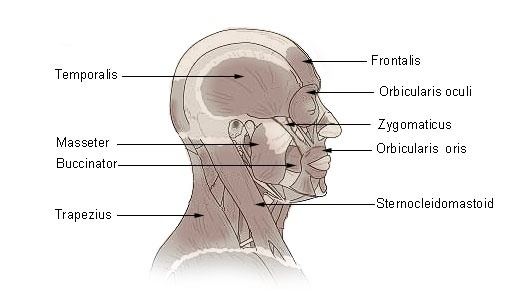 | ||
Facial Action Coding System (FACS) is a system to taxonomize human facial movements by their appearance on the face, based on a system originally developed by a Swedish anatomist named Carl-Herman Hjortsjö. It was later adopted by Paul Ekman and Wallace V. Friesen, and published in 1978. Ekman, Friesen, and Joseph C. Hager published a significant update to FACS in 2002. Movements of individual facial muscles are encoded by FACS from slight different instant changes in facial appearance. It is a common standard to systematically categorize the physical expression of emotions, and it has proven useful to psychologists and to animators. Due to subjectivity and time consumption issues, FACS has been established as a computed automated system that detects faces in videos, extracts the geometrical features of the faces, and then produces temporal profiles of each facial movement.
Contents
Uses
Using FACS, human coders can manually code nearly any anatomically possible facial expression, deconstructing it into the specific Action Units (AU) and their temporal segments that produced the expression. As AUs are independent of any interpretation, they can be used for any higher order decision making process including recognition of basic emotions, or pre-programmed commands for an ambient intelligent environment. The FACS Manual is over 500 pages in length and provides the AUs, as well as Ekman's interpretation of their meaning.
FACS defines AUs, which are a contraction or relaxation of one or more muscles. It also defines a number of Action Descriptors, which differ from AUs in that the authors of FACS have not specified the muscular basis for the action and have not distinguished specific behaviors as precisely as they have for the AUs.
For example, FACS can be used to distinguish two types of smiles as follows:
Although the labeling of expressions currently requires trained experts, researchers have had some success in using computers to automatically identify FACS codes, and thus quickly identify emotions. Computer graphical face models, such as CANDIDE or Artnatomy, allow expressions to be artificially posed by setting the desired action units.
The use of FACS has been proposed for use in the analysis of depression, and the measurement of pain in patients unable to express themselves verbally.
FACS is designed to be self-instructional. People can learn the technique from a number of sources including manuals and workshops, and obtain certification through testing. The original FACS has been modified to analyze facial movements in several non-human primates, namely chimpanzees, rhesus macaques, gibbons and siamangs, and orangutans. More recently, it was adapted for a domestic species, the dog.
Thus, FACS can be used to compare facial repertoires across species due to its anatomical basis. A study conducted by Vick and others (2006) suggests that FACS can be modified by taking differences in underlying morphology into account. Such considerations enable a comparison of the homologous facial movements present in humans and chimpanzees, to show that the facial expressions of both species result from extremely notable appearance changes. The development of FACS tools for different species allows the objective and anatomical study of facial expressions in communicative and emotional contexts. Furthermore, a cross-species analysis of facial expressions can help to answer interesting questions, such as which emotions are uniquely human.
EMFACS (Emotional Facial Action Coding System) and FACSAID (Facial Action Coding System Affect Interpretation Dictionary) consider only emotion-related facial actions. Examples of these are:
Codes for Action Units
For clarification, FACS is an index of facial expressions, but does not actually provide any bio-mechanical information about the degree of muscle activation. Though muscle activation is not part of FACS, the main muscles involved in the facial expression have been added here for the benefit of the reader.
Action Units (AUs) are the fundamental actions of individual muscles or groups of muscles.
Action Descriptors (ADs) are unitary movements that may involve the actions of several muscle groups (e.g., a forward‐thrusting movement of the jaw). The muscular basis for these actions hasn't been specified and specific behaviors haven't been distinguished as precisely as for the AUs.
For most accurate annotation, FACS suggests agreement from at least two independent certified FACS encoders.
Intensity Scoring
Intensities of FACS are annotated by appending letters A–E (for minimal-maximal intensity) to the Action Unit number (e.g. AU 1A is the weakest trace of AU 1 and AU 1E is the maximum intensity possible for the individual person).
Gross Behavior Codes
These codes are reserved for recording information about gross behaviors that may be relevant to the facial actions that are scored.
